A British garden is an amazing place with nature that attracts different kinds of species of birds. Some of them are year-round visitors whilst some of them are seasonal visitors. Birds watching is a relaxing, exciting, experience of the beauty of nature.
There is a variety of birds to observe in the British garden but some of them are uncommon to others.
Here are 20 small British birds that are very rare in your garden and you might just stumble across one of these 20 small birds.
Table of Contents
20 Small British Birds
Hawfinch:
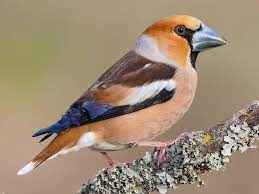
Hawfinch is one of the rarest small birds in the UK as it has declined in so many areas of Britain. Britain’s largest finch can be seen in mature woodland with a mix of tree species.
Hawfinch’s bills are powerful enough to split open cherry stones, exerting the hardest pressure of around 150 pounds per square inch.
Willow tit:
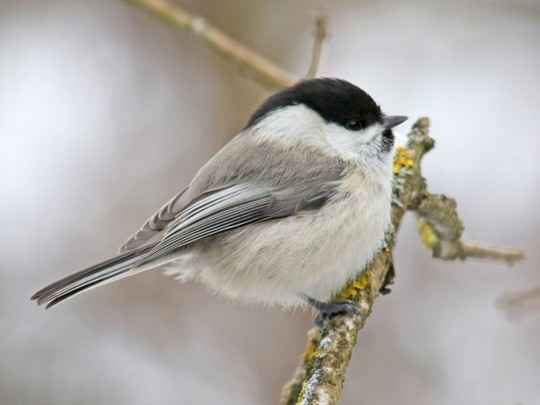
The willow tit is one of the cutest birds in the UK. They are small, black, brown, and white making them more distinguishable. These birds you can see these in their nesting holes or dens that they dig out of dying trees.
After completing digging out their dens they will be lined with their fur and feathers to keep them warm.
You can see Willow tits in Central England and Wales, but often you can see them in South Scotland.
Nightingale:
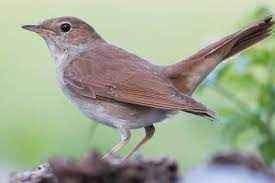
The Nightingale is a spring bird that you can find in the South East in the UK.
It is one of the rarest birds in the British that many are trying to see. This rare migrant became an increasingly rare visitor to Britain.
Now, there are only 6,700 rare singing Nightingales in Britain. They are not easily predictable, with features brown and white they have a very similar appearance to other small birds in the UK.
The main problem with finding these birds is you can hear them but it is very difficult to see them.
Hen Harrier:
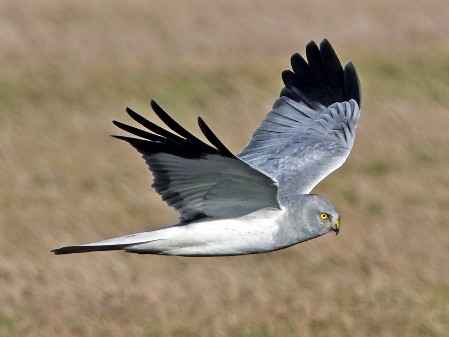
If you are looking for something rare then Hen Harrier is one of the rarest birds that might be unknown to you. This bird has a thick neck, sometimes thicker than its head.
Their feathers are a mix of brown and white whilst their wings can be darker. They have larger and stronger beaks that they use to catch their prey such as mammals and small birds.
The hen harrier is the most iconic bird in Northern England and it is very unique.
But, unfortunately, they have become one of the most endangered birds in the UK with an estimated 650 pairs.
So if you wish to see one for yourself, you need to travel to the Northern parts of the UK, including Wales, England, Scotland, and Northern Ireland.
Ruff:
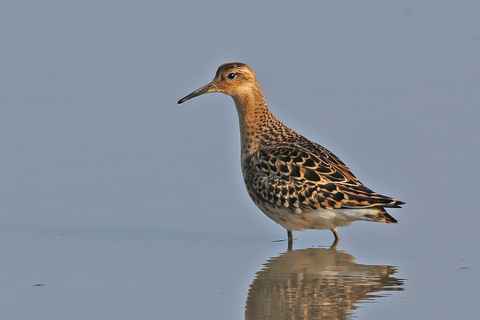
Ruff is a unique bird and very unlike other birds that you have seen in your surroundings.
They have white, brown, and black coloured feathers and the pattern makes for a spectacular sight. You cannot stop yourself to experience watching them.
The male spices are more easily spottable than the females due to the bright colours in their fury.
But, unfortunately, you could not find these birds in your garden as there are only 400 pairs in the UK.
These birds are most likely to be seen on the east and South coasts of the UK.
Lesser redpoll:
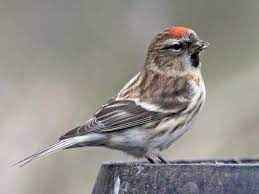
This stunning little finch breed is most likely demonstrating amazing gymnastics as they hang from tiny twigs to feed on alder seeds.
This bird has brown, and white coloured feathers and looks more impressive.
You can’t stop yourself from seeing the bird if it has been spotted. But unfortunately, the number is decreasing as they lose their habitat and in the intensification of agriculture.
Wood warbler:
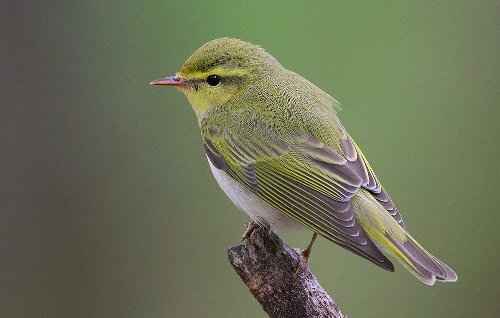
Wood warbler is a small British bird that comes with yellow and white feathers. You can see the largest density of these birds in wales. They like beech and oak woods.
You can distinguish these spices from the other warblers by the clear split between the bright yellow-green chest and its white belly.
But, this species is endangered in the UK; so these brightly coloured small birds are suffering a steady decline in Britain.
Goldcrest:
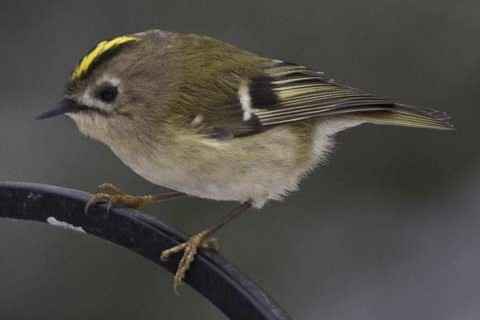
Goldcrest is the smallest bird in the UK, adults typically weigh 5gm.
Goldcrests are named because of the bright feathers in the middle of their head. It is yellow for females but has an orange centre for males.
The UK has a wider range population of these spices that stay all year round in the UK. However, the population increases a little in the winter as there are some migrants from Scandinavia.
You can see Goldcrest in mixed woodlands, parks, and gardens with large trees. However, this species is vulnerable to habitat loss due to the destruction of woodland and the felling of trees.
Robin:
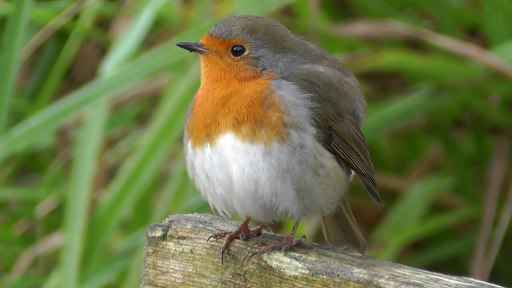
Robin is one of the most spotted British garden birds- its bright red chest makes it unique to identify.
You can find this bird in the gardens all year round. Robin’s song is also hearable all year round.
You can associate winter with this bird which is why it is symbolic of Christmas. During the winter, these birds may lose 10 % of their weight and they need to feed well every day.
Red-backed shrike:
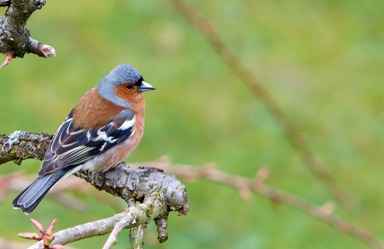
Now we are coming down some of the unknown birds you can get in the UK, one of them being the red-backed shrike.
The male species has brown-coloured back feathers with a cream-coloured underbelly. A grey head and black stripes around their eyes make them distinguishable.
You can have a hard time finding one of them yourself as there are only 100 pairs around in the UK. But they can be easily seen in other places in the world.
Just like Ruff, you can find these spices on the east and south coasts of the UK.
Blue tit:
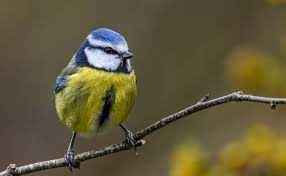
With the vibrant colour of the body blue tit is one of the most attractive garden birds in Britain. During the winter season, you can keep bird feeders filled with fatty food so that they can easily find it.
During winter these sweet birds find it difficult to locate anything to fill them up. Blue tits are small British birds that flock together in the garden.
These birds are so pretty that you cannot stop yourself from capturing them with your camera. The head and the backside are bluish-green and the belly is yellow.
Collared dove:
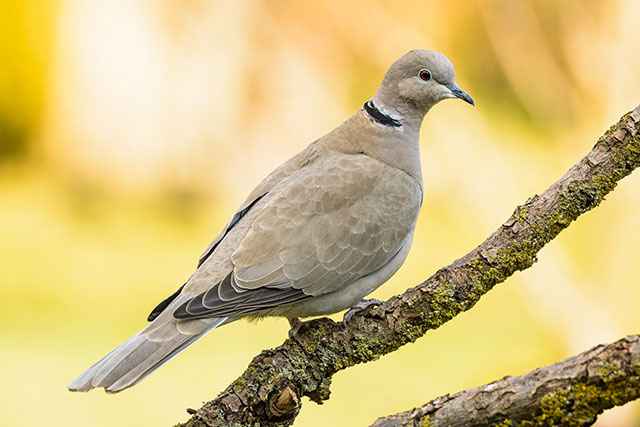
A collared dove is very similar to a pigeon so you might get the wrong to identify it.
You can see a black-coloured ring around its neck; it is the identical mark of these species. They also have red tinted yes and the body colour is grey.
Collared dove loves to visit your garden. Their song is a repetitive cooing.
Magpie:
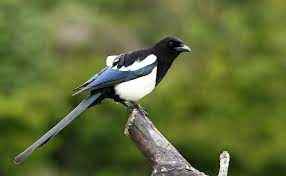
Magpies are the black and white coloured unmistakable UK birds that you can identify with their crackling noise while communicating with their kind.
Sometimes attempt to steal attractive objects like jewellery from the people visiting the park.
These common UK birds are widespread throughout the UK and you can find them in rural as well as urban areas.
Magpies are known for their excellent memory and intelligence. This species is also very curious.
Great tit:
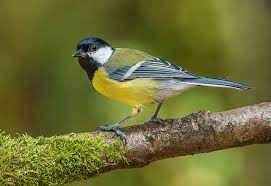
The great tit is a common British small bird that you can see in woodlands and nature-friendly garden areas.
This bird has a black head white cheeks, and black stripes that run down from breasts. The belly is yellow.
The great tit is one of the most popular birds in the UK but sometimes it gets aggressive. Sometimes, you can see these birds fighting with another tit regarding food sources or nesting areas.
After hatching, they feed their younger ones small insects like caterpillars, seeds, berries, and fruits.
Long-tailed tit:
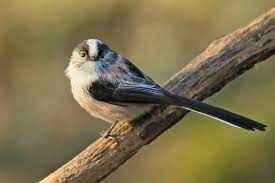
The long-tailed Tit is one of the small British birds with long tails. These birds are sometimes mistaken for blue tits because of their similar shape and size.
But. This bird hardly looks similar to the blue tit because of the white-coloured head with black stripe, grey back, white cheek patches, and pale pink below.
You can see long-tailed Tit in woodlands and coniferous forests throughout Britain. These small British birds can be seen everywhere across the UK and like to eat insects like a spiders, flies, etc.
Goldfinch:
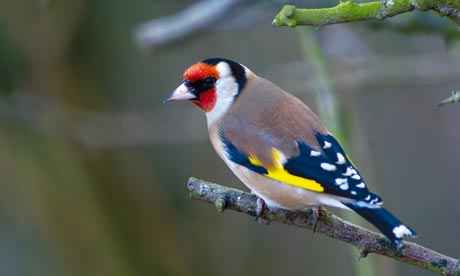
The British goldfinch is a rather small bird than others. You can recognize this bird with its orange and black coloured plumage, and its bright yellow wing patch.
This bird is very common in the British Isles but very uncommon in Scotland, and Northern Ireland.
They visit your garden to feed on the seeds of various plants.
They also eat wheat, barley, and some other grains. To crack the outer hard shell of the seeds and grains they hammer the seeds against stones with their beak.
Bullfinch:
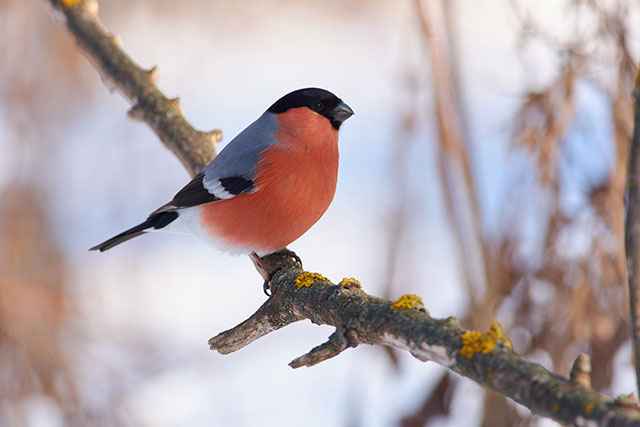
Bullfinch is another common British small bird that can be seen throughout Wales, England, Ireland, Scotland, and parts of Europe. You can easily identify Bullfinch with its dark pink breasts, black head, and black tail.
During the summer they eat insects like a caterpillars, ants, and some other small insects.
Bullfinch prefers shrubs for nesting that is most close to the ground. So, the predators hardly could attack their nests and harm their eggs.
Jay:
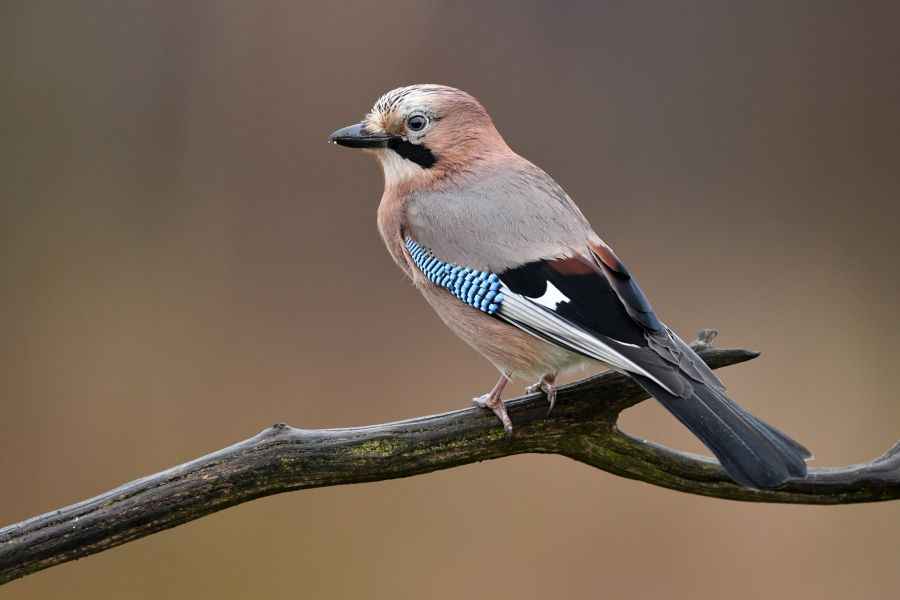
Jay is a colourful member of the Crow family. Jay is a largely resident bird in the British Isles and the name of this bird has taken from its harsh voice.
The bird has white cheeks and the upper part is blue. Its wings are blue and have a white-tipped tail.
You can see often this bird perching in the bush or atop a tree. They prey on insects and other small creatures. Usually, you can see this bird in pairs.
Blackbird:

Another small bird that you may likely spot in the British garden is a blackbird. You can find this bird singing a mellow song.
The male species are of black feathers whereas the females have brown-coloured feathers.
This bird is less feared and searches for any kind of food in your garden. You can recognize this bird with its yellow ring at the eyes, and long-tailed thrush.
Starling:

Starling is one of the common birds that you can spot in the British garden.
These birds flock together in the British garden so you are likely to spot them because of their large groups. These birds are more confident and fly both in the sky and on the ground.
As they come together with their flocks, it provides them safety from predators. Also, flying with the flocks helps them to be warm during the winter.
Conclusion:
British gardens are home to many kinds of species of birds. However, there are so many birds in the UK that people see them very often. The number is more than your imagination.
Here, in this article, we have provided some information regarding 20 small birds that you might not know about. Here, we have provided some special features of them so that you can easily spot them and you can enjoy them all.














